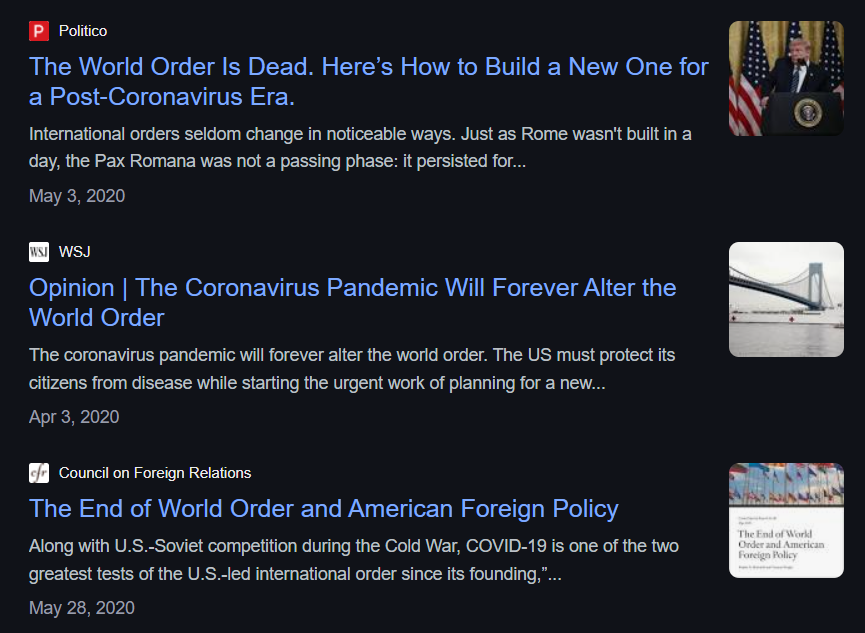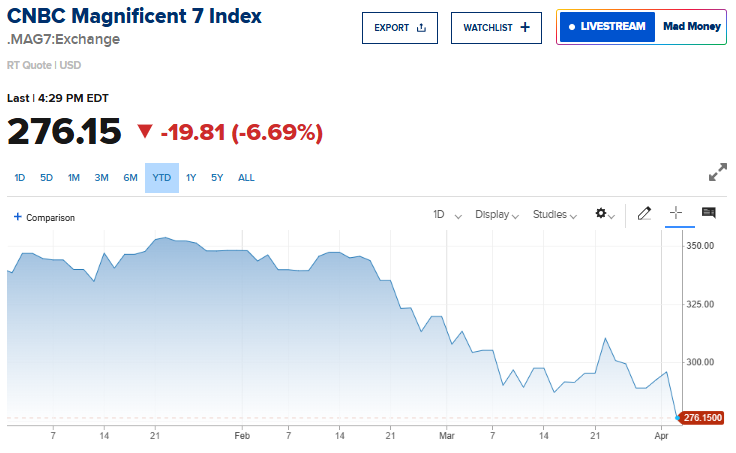Trade Alert: Crashy Market And Here’s How Inflation Will Play Out Over The Next Two Years
There’s only so much oil in the earth
It’s a fact of life – for what it’s worth
Something every little boy and girl should know since birth
That there’s only so much oil in the groundThere’s no excuse for our abuse
No excuse for our abuse
We just assume that we will not
Exceed the oil supply
But soon enough the world will watch the wells run dry – Tower of Power
If the Fed had taken the threat of inflation even just a little bit seriously back a year ago, we wouldn’t have the building societal shift in inflation expectations which is compounding the vicious inflation cycle that endless liquidity, higher energy prices and supply chain crises started. Heck, the Fed might have had a fighting chance of still getting in front of this inflation cycle if they’d listened to me a month ago when I wrote:
“Remember how I’ve been saying ‘This is a ‘No BS Market’.’ Well, the Fed tried to BS everybody yesterday with their silly 50 bps raise yesterday. Rates are still way below where they should be if they are serious about fighting inflation. They needed to shock the system yesterday with a 75bps raise and a promise of another 75bps raise. Instead they think they could play their same ol’ jawboning game. No BS allowed on the markets right now. I’m not doing much of anything in the hedge fund or the personal account today. Patience and caution remain front and center with a little increasing bullishness as prices get lower and panic will eventually peak.”
Note how I finished that paragraph because that’s just about how I feel today:
“Patience and caution remain front and center with a little increasing bullishness as prices get lower and panic will eventually peak.” I’ll come back this point at the of today’s post.
I see that Cramer is now on board with my analysis that a rate hike shock is needed and he’s right that it would now take a full 100bps raise to get the market’s attention now. A month ago, a 75bps raise or even a 50bps intrameeting raise from Powell and the Fed would have probably done the job.
The cycle of inflation will end as all the broader cycles we are living through in this economy play themselves out. What will solve inflation now? Higher rates are doing part of the job, and a recession that probably started in the last two months is also going to help crimp some demand which will probably help abate a little of the inflation dynamic. There’s also the building inventories at Target and Wal-Mart and other retailers that will require them to sell much of it at slashed prices. That will help a little bit. Let’s discuss.
The single biggest inflation input is the fact that for the last thirty years, central banks and global governments have been able to avoid the consequences of endless 0% rates and trillion dollar deficits. As I’ve explained in decades past, the giant productivity boom that the Internet, apps and instant flow of global money created during the last 25 years or so allowed governments and central banks around the world to plunder the wealth that would otherwise have flowed to individuals without anybody even realizing it. Central banks were able to set artificially low interest rates at 0% or even at a negative percent and governments were able to run giant deficits to further suck out the wealth and pump it through trillion dollar governmental budgets with kickbacks and targeted spending tricks and lobbyist-written laws enabling giant corporations and wealthy people to receive stealth welfare while paying tax rates at 1/3 or 1/2 what a small business pays.
That system comes with its own broader cycles of bubbles and crashes that we’ve navigated successfully now for decades. This is part of the crash part of the cycle and this latest Bubble they created was bigger than any prior and this Other Side Of The Bubble is being exacerbated by a virtuous cycle they were able to plunder that turns into a vicious cycle when the productivity and wealth creation it enabled has stalled. The central banks have no choice but to cut liquidity in the system and to try to help the inflation cycle end. That will, over time, help stop inflation.
Energy is the second most important input into inflation right now and I’ll hit on that more in a moment, but first let’s talk about The Supply Chain Crisis because it’s also a major inflationary input right now. Let’s use The Supply Chain Crisis in chips as our example.
After years of not getting the chips they need, any manufacturer of cars, computers, routers, satellites, smart phones, etc has double and triple ordered the chips they’ve been waiting on. There are millions of cars that Ford and GM and every other car manufacturer not named Tesla have ready to start selling if they could just get the chips they need for them. If, as is likely, there’s a wave of new chips that finally come into the car market in the next six months or so, those car vendors are finally going to start shipping cars to back orders and eventually even to those old car lot thingees where people used to walk around and peruse all the various models of each car just sitting there for months waiting for people to buy them. That wave of new car inventory will then drive prices of new cars down (finally) and that will drive used car prices down (finally) and used car prices could probably drop a good 30-40% over the course of the next year or two. Eventually, the shortage of cars available for sell will turn into a glut of cars available for sell and that will then force the car manufacturers to slow production a bit and then they’ll look around and realize they have way too many chips and they’ll cancel their orders and the backlogs of the chip vendors will then decline and the prices of chips will then decline. And then in another year or two, the market will stablize and the insatiable growth of demand for ever more chips that do ever more things will get back inline just as Intel’s fab business in the US and Europe is set up to step into a stable and secularly growing chip industry.
Smart phones, computers, satellites, etc will likely all face similar shortage-to-glut-to-stabilization cycle in coming over the next year or two.
Finally, let’s talk about oil and energy’s impact on inflation as it is the single biggest input right now. Do you all remember when Republicans and Democrats like Trump forced OPEC and Mexico and Russia to cut oil production by 10 to 12 million barrels of oil a day so prices would go higher two years ago? That supply never came back online and so Trump and the government got what they wanted? Now everybody’s like, “Biden just needs to work with the big oil companies to pump more oil”, but nobody’s talking about simply going back to OPEC+ (sans Russia this time) and begging them to simply pump as much oil as they used to before we had begged them to stop pumping so much oil? And maybe all these fake free market politicians should stop pretending that they are willing to let a free market work until they constantly decide they need to intervene without foreseeing any of these kinds of unintended consequences that always come with marketplace intervention? Meanwhile, the whole green ESG movement has made the giant oil companies shorten their investment payback periods such that even if Biden did start giving them carte blanche drilling and pipeline rights, they’d have a hard time getting past the political/societal pressure of mass drilling anyway. Anyway, for the higher energy prices we are dealing with right now, I blame both Republicans and Democrats and all their energy subsidies, global supply protections through wars in the Middle East and other military presence, tax loopholes and other corruptions that they both have been doing equally my entire lifetime.
All that said, the fact is that energy is a pure commodity and that means that it will always be subjected to cycles where higher prices bring on more global supply over time and lower prices dwindle global supply over time and right now prices are high and over time supply of energy (not just oil) will increase and eventually overshoot on the production side and then eventually crash and the eventually stabilize.
As usual, I’ve tried to be in front of the economic cycle as I wrote a lot last year about how the markets were going through a Blow-Off Top ending to the 13-year long Bubble-Blowing Bull Market and how inflation was going to be a problem. And now here we are on The Other Side Of The Bubble-Blowing Bull Market with inflation as a problem. Looking ahead and around the corner, we can see that inflation is most likely going to ebb here in the next few months and then we will have a lot of deflationary forces back into the system. It’s always instructive at times when the markets are panicky crashy and ugly to remember that things usually do work out for the US and at some point, it will pay to bet on things working out for the US again this time.
Remember that quote above: “Patience and caution remain front and center with a little increasing bullishness as prices get lower and panic will eventually peak.”
I think patience and caution are still key here, but I am getting a little bit more bullish again into this panicky crashy ugly action.
Here’s what I’m doing today. In the hedge fund, I’ve sold quite a few puts I’ve had and I’ve covered a chunk of most of my shorts, opening up some more long exposure into this panicky crashy ugly action. I nibbled a little FB and INTC and IBB and UBER and have started buying another biotech etf with the symbol XBI.
Easy does it, no easy answers except to say that I guarantee the cycle will turn again, good stocks will eventually bottom and fortunes will be made in the next five and ten years.



